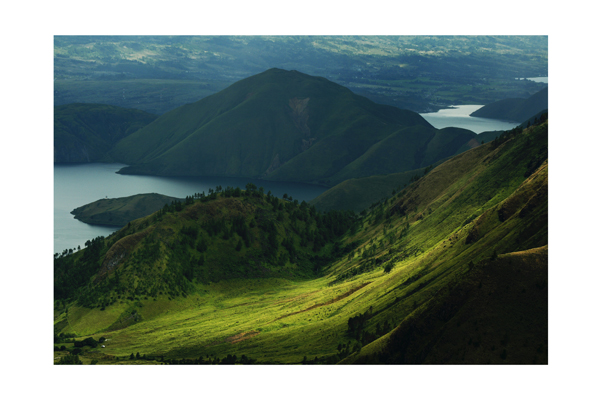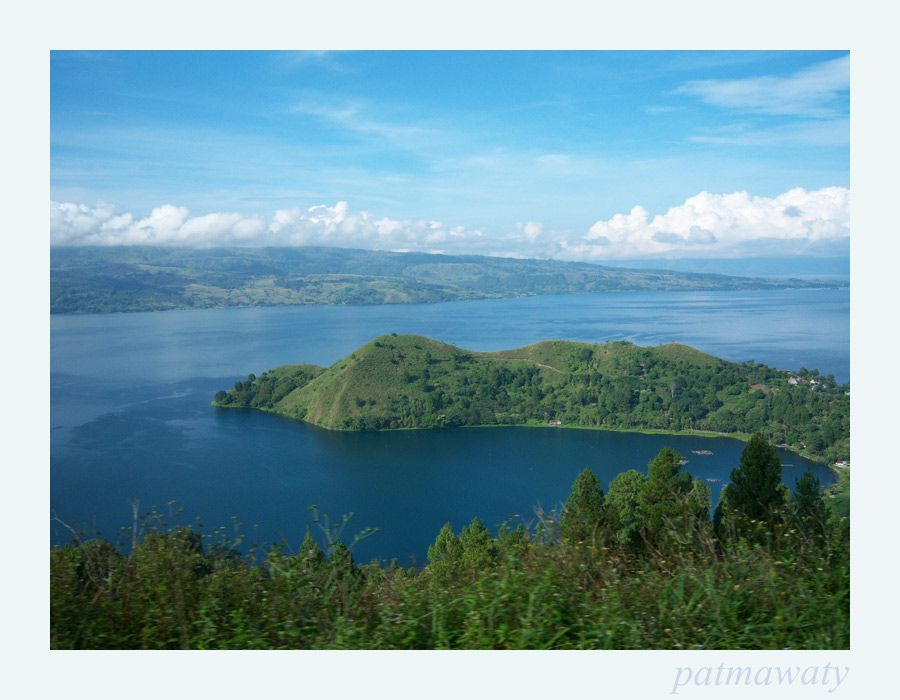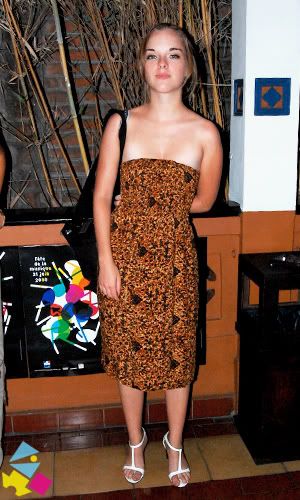JAKARTA
Jakarta is the capital city of the Republic of Indonesia, a country composed of more than 13,000 islands with a population of over 180 million. Comprising more than 300 ethnic groups speaking 200 different languages, the Indonesia population exhibits marked diversity in its linguistic, culture, and religious traditions. As the Capital City, Jakarta is a melting pot of representatives from each of these ethnic groups. Jakarta is a special territory enjoying the status of a province, consisting of Greater Jakarta, covering of 637.44 square km area. Located on the northern coast of West Java, it is the center of government, commerce and industry and has an extensive communications network with the rest of the country and the outside world. Strategically positioned in the archipelago, the city is also the principal gateway to the rest of Indonesia. From the Capital City, sophisticated land, air, and sea transport is available to the rest of the country and beyond.
Jakarta is one of Indonesia's designated tourist areas. It is a gateway to other tourist destinations in Indonesia and is equipped with all the means of modern 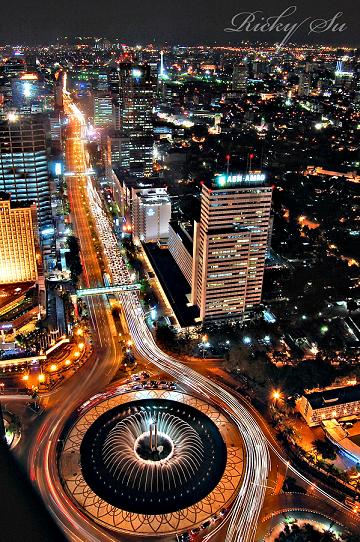 transportation by air, sea, rail, or by land. It has the largest and most modern airport in the country, the most important harbor in Indonesia and is well connected by rail of good roads to other destinations in Java, Sumatra, and Bali. As Indonesia's main gateway, Soekarno-Hatta International Airport serves a growing number of international airlines and domestic flights. Jakarta is a city of contrasts; the traditional and the modern, the rich and the poor, the sacral and the worldly, often stand side by side in this bustling metropolis. Even its population gathered from all those diverse ethnic and cultural groups, which compose Indonesia, are constantly juxtaposed present reminder of the national motto; Unity in Diversity.
transportation by air, sea, rail, or by land. It has the largest and most modern airport in the country, the most important harbor in Indonesia and is well connected by rail of good roads to other destinations in Java, Sumatra, and Bali. As Indonesia's main gateway, Soekarno-Hatta International Airport serves a growing number of international airlines and domestic flights. Jakarta is a city of contrasts; the traditional and the modern, the rich and the poor, the sacral and the worldly, often stand side by side in this bustling metropolis. Even its population gathered from all those diverse ethnic and cultural groups, which compose Indonesia, are constantly juxtaposed present reminder of the national motto; Unity in Diversity.
Finding its origin in the small early 16th century harbor town of Sunda Kelapa, Jakarta's founding is thought to have taken place on June 22, 1527, when it was re-named Jayakarta, meaning Glorious Victory by the conquering Prince Fatahillah from neighboring Cirebon. The Dutch East Indies Company, which captured the town and destroyed it in 1619, changed its name into Batavia and made it the center for the expansion of their power in the East Indies. Shortly after the outbreak of World War II, Batavia fell into the hands of the invading Japanese forces that changed the name of the city into 'Jakarta' as a gesture aimed at winning the sympathy of the Indonesians. The name was retained after Indonesia achieved national independence after the war's end.
The ethnic of Jakarta called "Orang Betawi" speaks Betawi Malay, spoken as well in the surrounding towns such as Bekasi and Tangerang. Their language, Betawi Malay, has two variations: conventional Betawi Malay, spoken by elder people and bred in Jakarta, and modern Jakarta Malay, a slang form spoken by the younger generation and migrants.
Jakarta's 
architecture reflects to a large extent the influx of outside influences, which came and has remained in this vital seaport city. Taman Fatahillah Restoration Project, begun in the early 1970s has restored one of the oldest sections of Jakarta also known as Old Batavia to approximately its original state. The Old Portuguese Church and warehouse have been rehabilitated into living museums. The old Supreme Court building is now a museum of fine arts, which also houses part of the excellent Chinese porcelain collection of former Vice President Adam Malik. The old Town Hall has become the Jakarta Museum, displaying such rare items as Indonesia's old historical documents and Dutch period furniture. Its tower clock was once returned to England to be repaired under its lifetime guarantee, which up to now has already

lasted hundreds of years.
In recent years, Jakarta has expanded its facilities for visitors with luxury hotels, fine restaurants, exciting nightlife and modern shopping centers. It contains many tourist attractions such as Taman Mini Indonesia Indah (Beautiful "Indonesia in Miniature" Park), restored colonial period buildings, island resorts in the Pula Seribu (Thousand Island), and an extensive beach recreation complex called Ancol. "Beautiful Indonesia in Miniature Park" popularly called TMII "Taman Mini Indonesia Indah", built to portray the variety of cultures found within the many islands contained in the Republic of Indonesia, this open-air museum comprises the many architectural forms of arts and traditions of all Indonesia provinces. It is proof of the country's motto of Unity in Diversity as well as Freedom of Religion depicted in the houses of worship built on the grounds.
Jakarta has preserved its past and is developing for the future. Skyscrapers in the center of the city are part of a new look. Modern luxury hotels today cater to the discriminating visitors. Transport within the city is plentiful. Jakarta is the center of the nation's industrial, political and cultural life. It is home to many of the country's finest research institutes, educational facilities, and cultural organizations. Jakarta is uniquely the seat of both the national as well as the regional government.
Over the last several decades, Jakarta has proudly developed into one of Asia's most prominent metropolitan centers. Today, Jakarta's skyline is covered by modern high rises. The many state-of-the-art shopping centers, recreation complexes and toll-roads have become hallmarks of the city. The quality of life and the general welfare of its inhabitants have improved considerably with the city's fast pace of development. Jakarta's cultural richness and dynamic growth contribute significantly to its growing importance as one of the world's leading capital cities.
Geographically
The Province is geographically located on 6012' South Latitude and 106048'- East Longitude. The government administration is set into 5 regions South Jakarta, Central Jakarta, East Jakarta, West Jakarta, North Jakarta and 1 regency/ administrative city, namely Thousand Island regency. The largest city is East Jakarta (187.73 sq km) and the smallest is Thousand Island regency (11.81 sq km). The average rainfall is 1,916.8- 924.50 mm/year. The temperature is between of 22 C - 33 C. 
People
Indonesians are known as friendliest people in the world towards foreigners and most tolerant towards their manners. But there are few things, which are not done among Indonesia. They consider the head as something sacred that must be respected. Patting on the head is not done among adults. Calling someone by crooking the index finger is considered impolite and giving or receiving things with the left hand is no - where acceptable. The handshake accompanied with a smile is common among men and women greeting or welcoming somebody.
Not less 9 million people live in Jakarta representing nearly all the ethnic groups in the archipelago. The major groups are Sundanese, Javanese, Chinese, and the native community is Orang Betawi (people of Betawi). The other large groups are the Minangkabau people, the Bataks, the Manadonase, and the other people from Sulawesi and the Ambonase. Orang Betawi emerged in the 19th century from a melting pot of races, ethnic groups and cultures. They have their own culture distinct from other ethnics' cultures. In 1923 they founded an organization called Kaum Betawi, which was in fact a statement about the existence of the Betawi ethnic group. The majority professes is Islam. But it does not mean that Indonesia is an Islamic state. It is a Pancasila state. And one of the principles of Pancasila, the state ideology, is "belief in the one Supreme God". This means that the various belief systems must be respected and respect each other. This explains the ubiquitous Moslem prayer houses in the city beside many churches and a few temples.
In Taman Mini Indonesia Indah (Beautiful Indonesia in Miniature Park), the prince Diponegoro Mosque is juxtaposition with the saint Catherine Church, the Hallelujah Church, the Pura Penataran Agung Kertabumi Temple, the Aria Dwipa Arama Monastery and the Indonesian Mystic Convention Hall, symbolizing the motto: Bhinneka Tunggal Ika (Unity In Diversity) in matters of religions and belief - systems.
Betawi
Indonesia's cultural diversity is celebrated in the national motto, Bhineka Tunggal Ika, meaning "Unity in Diversity." One manifestation of this tenet of Indonesian national identity is the government's efforts to give equal precedence to the development of traditional art forms from each ethnic group. In Jakarta, Orang Betawi, the natives of the city, are considered to be the hosts of these cultures, having emerged from the melting pot of races, ethnic groups and cultures of Indonesia in the 19th century. Today they constitute one of the city's main ethnic groups along side the Javanese (from Central and Eastern Java), Sundanese (from West Java) and Chinese.
Culture
To see for themselves what and now those Betawi art forms are, we can go to any travel agent and ask for tour to a " Betawi Cultural Institution "to catch a glimpse of the real thing". Or we can visit the Jakarta pavilion at Taman Mini Indonesia Indah (Beautiful Indonesia in Miniature Park) which has long been showing Betawi ceremonies such as the Betawi wedding ceremony, the circumcision procession, the baby head - shaving ceremony etc. As mentioned before, the Betawi group emerged in the 19th century from the melting pot of races, ethnic groups and cultures. Today the Betawi culture has a distinct personality of its own, but one can discern the various influences of other cultures by looking or listening to its art form.
The Tanjidor orchestra is certainly inherited from Dutch land - owners and the Gambang Kromong and Cokek dance originated in the residence of wealthy Chinese traders and merchants. The Betawi Cokek dance shows Balinese influence in the movement of the dancers and the style of playing the gamelan. This style of playing the gamelan can also be observed in the gamelan orchestra accompanying the Wayang Kulit Betawi show. The Portuguese speaking community has also left its inheritance, the Kroncong Tugu with its popular songs Nina Bobo, Kaparinyo and Kroncong moritsko is said to be the origin of the popular Kroncong orchestra of to day.
The Javanese presence since the 17th century has left its mark too on the Betawi music, dance and theatre; Wayang Kulit Betawi and Lenong are examples of this influence. A major influence on the Betawi culture is Islam, the religion of the majority of the people. The Rebana orchestra, the Gambus orchestra, the Zapin or Japin dance are Islam inspired art forms. The Betawi traditional art is developed and accepted well. Not only Betawi people, but also other ethnic groups are fond of this art. For example, the traditional drama-Lenong and Topeng Blantik (Blantik mask), the traditional dance - Tari Topeng (Mask Dance), Ondel-ondel, Ronggeng Topeng, etc, the traditional art of music - Sambrah, Rebana, Gambang Kromong, Tanjidor, Puppet - Betawi puppet using the Malay-Betawi dialect
Basically the marriage system used by Betawi people is the Islamic law. To whom they are allowed or have not allowed to get married with. The young people are also free to choose their partners. In spite of this, the parents` role either from the man's or woman's side are very important to approve the marriage, for the parents are involved in holding the marriage party. Before getting marriage the man and the woman are introduced to each other and when they both have agreement, the man's parents will propose the girl. After the two parties reach an agreement, they decide the time to hold the dowry delivery ceremony which is usually represented by another party, such as the relatives of the man's and the woman's sides. The marriage ceremony is held on the agreed day. After the marriage contract ceremony both the man and the woman go back to each their parents (their home). A few days later a ceremony of parents-in-law relationship is held and the bridegroom goes in procession to the bride's house. Before entering the bride's house, the bridegroom's side holds the question-answer ceremony by using the traditional poetry rhythm and it is accompanied by tambourine/rabana music with the welcome / marhaban songs. Then, the bridegroom is allowed to enter the house to meet the bride. They sit side by side for a moment. After that the bridegroom joins his parents and companions who escort him to the bride` house. When the ceremony is finished the bride may come with his husband to his house.
Language
The official language is Bahasa Indonesia and English is the most spoken and understood foreign language. In convention hotels they have translators for English, France, Dutch, German, Japanese, Mandarin, and even Spanish. The native Betawi people speak Betawi Malay, which is different from standard Malay. There are variations in the language according to region, the Betawi Malay of the centre and that of the periphery. There are also socio - cultural variations. The older people born and bred in Jakarta speak the traditional Betawi Malay, while the younger people and migrants speak the modern version of the language. In the language, various influences from other cultures are apparent, Balinese, Sundanese, and Javanese influences are there and words derived from Arabic, Dutch, Chinese and Portuguese are easily recognizable. Betawi Malay is spoken not only in Jakarta, but also in parts of Bekasi, Tangerang and Bogor, which belong to the province of West Java.
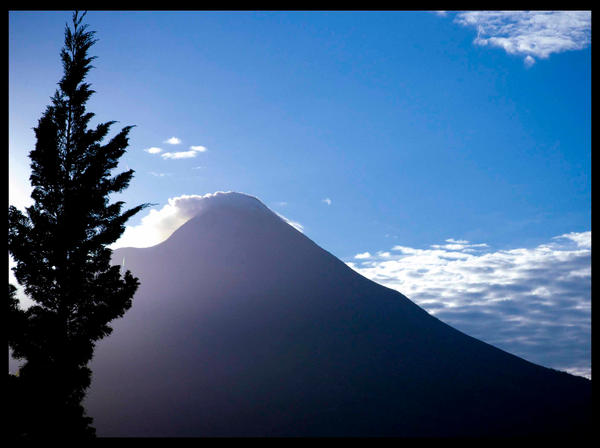
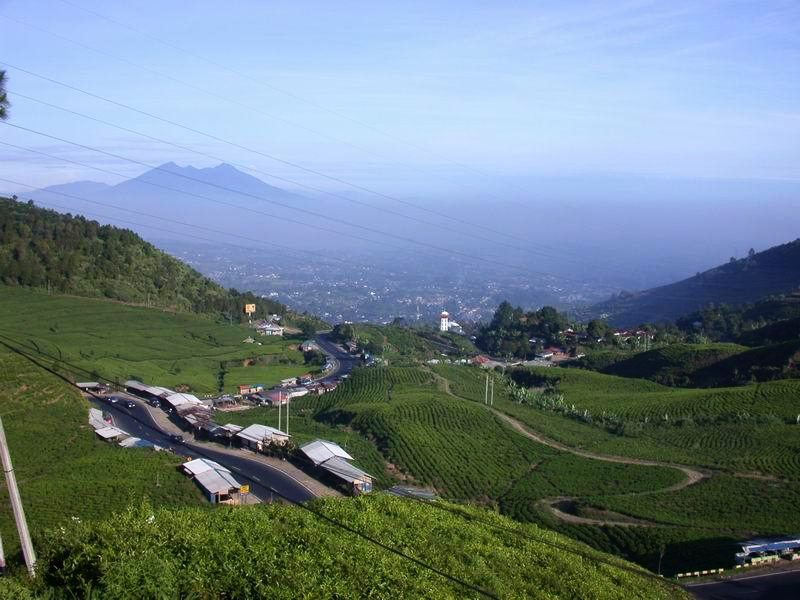 object in Puncak is Lido Park, which is located in Cigombong village/Wates Jaya (km. 21) Rd. Ciawi-Sukabumi, Cijeruk. Facilities that are provided in Lido Park ara restaurant, cottages, swimming pools, camping grounds, and other facilities for lake recreations. Gunung Mas XII Plantation, which is located in Rd. Puncak, Cisarua district. It offers panorama with hilly panorama, which could only be found in Puncak. Activities that could be done are tea walk and seeing the making of the tea from the picking of tea until the tea is ready to serve.
object in Puncak is Lido Park, which is located in Cigombong village/Wates Jaya (km. 21) Rd. Ciawi-Sukabumi, Cijeruk. Facilities that are provided in Lido Park ara restaurant, cottages, swimming pools, camping grounds, and other facilities for lake recreations. Gunung Mas XII Plantation, which is located in Rd. Puncak, Cisarua district. It offers panorama with hilly panorama, which could only be found in Puncak. Activities that could be done are tea walk and seeing the making of the tea from the picking of tea until the tea is ready to serve.




